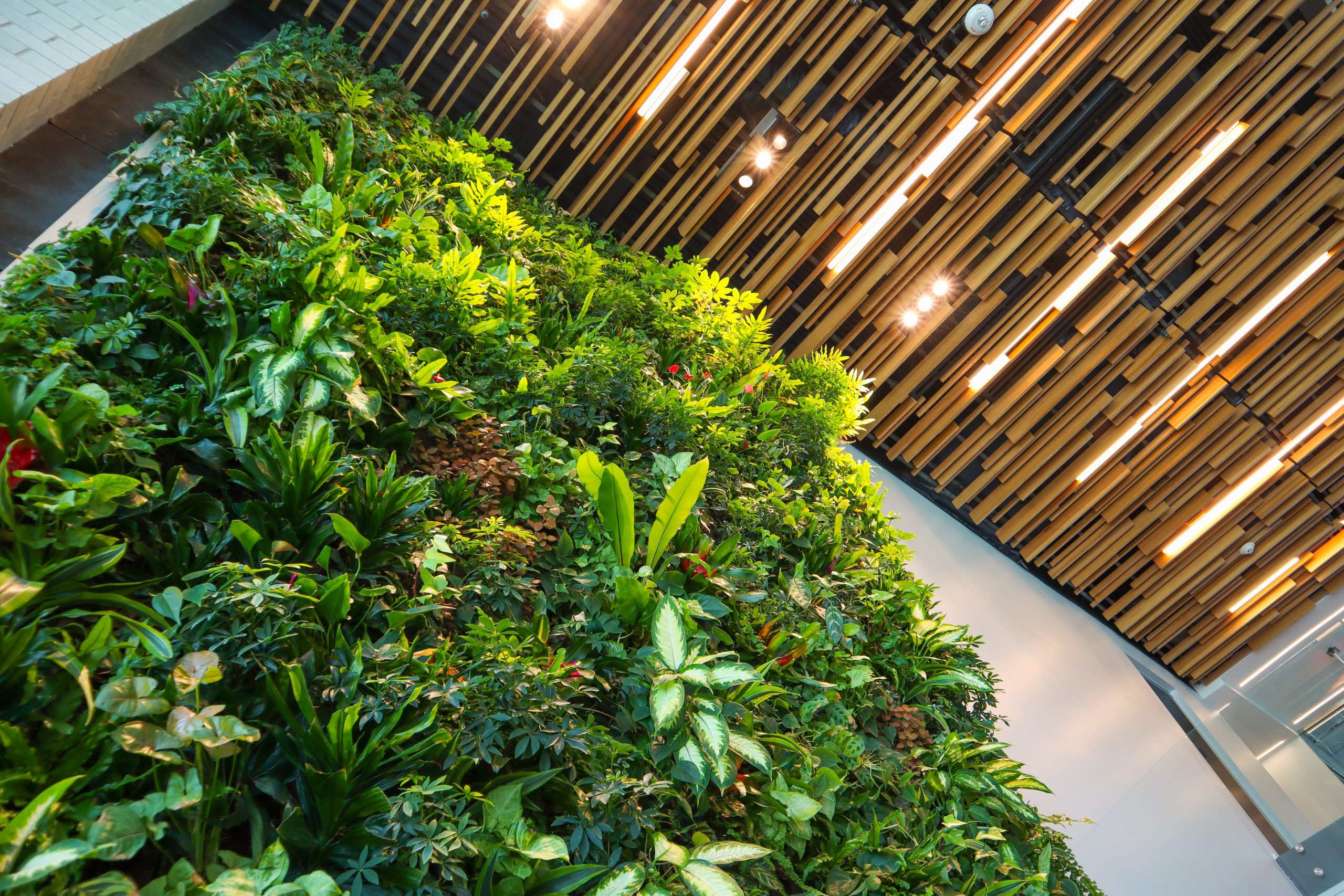Living Walls: A Detailed Exploration of Nature’s Green Masterpieces
In the bustling confines of urban environments, where space is at a premium and concrete structures dominate the landscape, a revolutionary concept has emerged to bring nature back into our lives – living walls.
What is a living wall?
Also known as green walls or vertical gardens, living walls are innovative vertical installations of living plants that adorn building facades, interior walls, or freestanding structures.
These green masterpieces serve as a powerful testament to the harmonious integration of nature and architecture, offering a myriad of benefits for both the environment and our well-being.
Here will delve into the fascinating world of living walls, exploring their captivating beauty, the numerous advantages they offer, different types, construction techniques, and their significant environmental impact.
The Concept of Living Walls: The idea of living walls has gained immense popularity as architects, environmentalists, and urban planners seek innovative ways to counteract the negative environmental impact of urbanization.
These vibrant green spaces breathe life into the heart of our cities and buildings, transforming cold, sterile walls into thriving ecosystems. The concept of living walls revolves around the belief that incorporating natural elements into our constructed environments can create a more harmonious and sustainable balance between humans and nature.
Benefits of Living Walls
- Aesthetic Appeal: Living walls add a touch of natural beauty and serenity to otherwise monotonous concrete walls, enhancing the ambiance of any space and creating a refreshing visual spectacle.
- Improved Air Quality: Acting as natural air purifiers, living walls absorb carbon dioxide and pollutants from the air, converting them into oxygen through photosynthesis. This process significantly improves indoor air quality, leading to a healthier and more pleasant environment for building occupants.
- Temperature Regulation: The dense vegetation of living walls provides a natural insulating effect, reducing heat absorption during hot seasons and helping to regulate indoor temperatures, thereby reducing energy consumption for cooling.
- Noise Reduction: The lush foliage of living walls acts as a natural sound absorber, dampening noise and creating a more peaceful and tranquil atmosphere in noisy urban settings.
- Biodiversity Support: Living walls attract various forms of wildlife, including birds, butterflies, and insects, promoting biodiversity in urban environments and contributing to the preservation of local ecosystems.
- Stress Reduction: Studies have shown that being in the presence of greenery and natural elements can have a positive impact on mental health, reducing stress and promoting overall well-being.
Types of Living Walls
- Green Facades: These living walls are attached to the exterior of buildings, covering entire facades with a lush tapestry of vegetation. They provide a striking visual display, transforming the appearance of buildings and making them stand out amidst the urban landscape.
- Interior Living Walls: Installed inside buildings, interior living walls bring nature indoors, creating stunning living art installations that inspire and captivate occupants. These installations have become increasingly popular in offices, hotels, and residential spaces, where they infuse environments with a sense of tranquility and connection to nature.
- Freestanding Living Walls: Freestanding living walls are independent structures that can be placed both indoors and outdoors. These versatile installations offer the flexibility to incorporate greenery into unconventional spaces, such as hallways, atriums, and open public areas.
- Modular Systems: Modular living wall systems consist of pre-grown panels or trays that can be easily installed and maintained. These systems offer flexibility and adaptability, allowing for the easy relocation or expansion of living walls as needed.
Construction and Maintenance
- Plant Selection: Choosing the right plant species is vital for the success of living walls. Factors such as lighting conditions, humidity levels, and available space should be carefully considered to ensure the longevity and health of the vegetation.
- Irrigation and Water Management: Living walls require proper irrigation systems to provide adequate water for the plants. Drip irrigation and hydroponic techniques are commonly used to efficiently distribute water to each plant.
- Maintenance: Regular maintenance is essential to sustain the vitality and health of living walls. Tasks such as pruning, fertilization, and monitoring for pest infestations are necessary to ensure the continued well-being of the plant life.
Environmental Impact
Living walls offer several significant environmental benefits, making them an eco-friendly addition to urban landscapes:
- Urban Heat Island Effect Mitigation: By reducing heat absorption from buildings and pavements, living walls help combat the urban heat island effect, which leads to elevated temperatures in cities.
- Carbon Sequestration: Plants absorb carbon dioxide during photosynthesis, acting as a natural carbon sink and contributing to the reduction of greenhouse gases in the atmosphere.
- Stormwater Management: Living walls can help manage stormwater runoff by absorbing and retaining rainwater, thereby reducing the burden on drainage systems and mitigating the risk of floods.
Living walls epitomize the perfect union of nature and modern architecture, providing an enchanting solution to many of the challenges faced by urban environments. Their aesthetic allure, coupled with numerous environmental and health benefits, has made them more than just a decorative feature – they are transformative installations that enrich our lives and the planet.
As we continue to embrace sustainable and eco-conscious practices, the prevalence of living walls is set to grow, weaving nature’s touch into the very fabric of our built environments and bringing us closer to a greener, more harmonious future.
